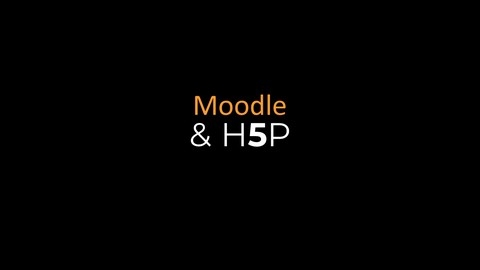Moodle is a powerful open-source learning management system (LMS) used by educators and organizations worldwide to create and deliver online courses.
It’s highly customizable, offering a range of features for managing courses, students, and learning materials.
By learning Moodle administration, you can build and maintain engaging online learning environments, tailor them to specific needs, and provide a seamless experience for both educators and learners.
Whether you’re a teacher, trainer, or administrator, mastering Moodle can significantly enhance your ability to deliver effective online education.
Finding the perfect Moodle course on Udemy can be overwhelming.
You’re looking for a course that’s comprehensive, up-to-date, and taught by experienced Moodle practitioners who can guide you through the intricacies of this robust platform.
You want to learn not just the basics, but also gain practical skills to confidently manage and customize your Moodle site.
Based on our research, the best overall Moodle course on Udemy is Moodle Administration Tutorial: Beginner, Intermediate Guide.
This course provides a comprehensive introduction to Moodle administration, covering everything from installation and basic configuration to user management, course creation, and customization.
It’s hands-on and practical, allowing you to build your own Moodle site and explore its features in a real-world context.
However, if you have specific needs or learning preferences, there are other excellent Moodle courses available on Udemy.
Keep reading to explore our recommendations for beginners, intermediate learners, and those focused on specific aspects of Moodle administration, such as plugin development or theme customization.
Moodle Administration Tutorial: Beginner, Intermediate Guide
This Moodle Administration Tutorial guides you from beginner to confident Moodle administrator.
You’ll learn what an LMS is, why Moodle is a powerful option (and when it’s not), and how to navigate its interface.
Imagine building a real Moodle LMS from scratch on your own computer – that’s the hands-on experience you get, installing Moodle on Windows, complete with Apache, PHP, and MySQL.
You’ll become comfortable with the Administration block and learn how to customize your Moodle site using themes.
Think of giving your Moodle site a brand-new look, complete with a professional logo and colors.
You’ll discover where to find and install free themes like Aardvark and Essential, and how to make key decisions about selecting the best fit for your organization.
Get ready to manage categories and courses like a pro, adding users individually or in bulk.
You’ll learn how to set up self-registration so students can enroll themselves and explore batch enrollment for efficient course management.
The course breaks down Moodle’s roles and permissions, showing you how to customize titles and control user access to ensure a secure and well-organized learning environment.
You’ll discover how to implement vital security measures like blocking IP addresses and configuring site policies.
Plus, learn how to use Softculous, a tool offered by many hosting providers like Hostgator, for easy Moodle installation on your live site.
Moodle 3.0x Masterclass: Complete Educator’s Guide to Moodle
This Moodle 3.0x Masterclass guides you through setting up and managing a Moodle course, from the basics to advanced techniques.
You begin by navigating Moodle’s interface, customizing your profile, and structuring your course.
You learn to add resources like files and videos, and design engaging learning activities such as quizzes with various question types and grading settings.
You then explore Moodle’s powerful tools for student and communication management.
You master different student enrollment methods, including manual, self-registration, and batch enrollment.
You also learn to use news forums and messaging features to keep students informed and engaged.
The course dives into group management, teaching you to create and utilize groups to foster collaboration and differentiated learning.
This masterclass guides you through Moodle’s Gradebook, a tool that automatically records student assessments.
You discover how to interpret data, track student progress, and export data for in-depth analysis.
The course extends beyond the essentials, offering bonus sections packed with valuable insights.
You learn best practices for each stage of the course lifecycle, from the initial conception to the final course closure.
The course also covers administrative tasks, including adding new users and managing bulk uploads.
You even get a walkthrough of installing Moodle 3.0 on your Windows machine, including the installation of Apache, PHP, and MySQL.
Moodle and H5P
You’ll begin by installing Moodle and the H5P plugin, setting the stage for your interactive content creation journey.
The course then introduces you to a variety of H5P content types, ranging from simple elements like Accordions and Timelines to sophisticated tools like Branching Scenarios and Virtual Tours.
You’ll learn to design diverse quizzes, incorporating formats such as Fill-in-the-Blanks, Drag and Drop, and even interactive options like “Speak the Words”.
You’ll then explore H5P’s multimedia capabilities.
You’ll discover how to integrate audio, interactive video, and even create immersive experiences with 360-degree virtual tours.
The course also introduces the playful side of H5P, guiding you through the creation of games like Memory Games and Find-the-Words puzzles.
The course doesn’t stop at the basics.
You’ll unlock advanced H5P functionalities, mastering the art of importing and exporting content, seamlessly embedding it into your Moodle courses, and even linking it to your Moodle Gradebook.
You’ll discover how to leverage the H5P Content Bank for effortless content reuse across different courses, maximizing your efficiency and impact as an educator.
Moodle 3.0x Administration Tutorial: ADVANCED COURSE
This Moodle 3.0x Administration course goes beyond the basics.
You begin with software engineering principles designed for Moodle administrators, building a foundation for managing your Moodle platform.
You then discover how to create a robust testing strategy, ensuring your Moodle environment runs smoothly.
The course then guides you through Moodle’s plugin architecture.
You learn to find, install, upgrade, and uninstall plugins, gaining skills to expand Moodle’s functionality and maintain platform security.
You will explore CPanel and phpMyAdmin for database backups, mastering the process of backing up and restoring entire Moodle courses.
The course also prepares you for Moodle upgrades, teaching best practices and a smooth upgrade workflow using tools like SOFTACULOUS and CPanel.
Finally, you discover advanced enrollment techniques, including self-registration for users, cohort synchronization, and setting up guest access.
You also delve into Moodle PayPal integration, learning to configure secure payments for your educational content.
Moodle developer course for beginners
This course guides you through each step of becoming a Moodle developer.
You begin by installing Moodle on an Ubuntu system, using PHP, Apache, and MySQL.
You then learn to use phpMyAdmin, a tool that lets you interact with your database visually.
The course also covers setting up PhpStorm, a helpful tool for writing code.
You then dive into Moodle’s core, understanding how its files and plugins are organized and how to store and update data in the database.
You learn by doing, creating a plugin that adds a custom feature to your Moodle site.
You fetch real user data from the database and display it in your plugin, gaining practical experience.
You then explore how to give your Moodle site a fresh look by creating a custom theme.
You learn to modify the user interface to your liking.
You’ll even build a local plugin from scratch, learning how to create database tables, design forms, and manage user input.
This course teaches you to build dynamic, interactive elements by displaying notifications to your users and writing database queries.
You also learn to write unit tests, ensuring that your code works correctly and reliably.
How to create a plugin for Moodle using PHP
This course on creating Moodle plugins with PHP equips you with valuable skills to customize your Moodle platform.
You begin by setting up your development environment and grasping the fundamentals of Moodle plugins.
The syllabus guides you through creating essential files like “version.php” and “language.php,” laying the foundation for your plugin development journey.
You then delve into creating templates and enhancing user interaction with JavaScript, bringing dynamic elements to your Moodle plugins.
The course doesn’t shy away from data management either.
You learn to interact with the Moodle database, creating tables and forms to manage information effectively.
Imagine building a custom grader details page where teachers can input and analyze student grades - this course gives you the tools to achieve that.
You further enhance this grader details page by enabling data export to CSV and PDF formats.
This practical skill allows for efficient data sharing and analysis within your Moodle platform.
Finally, the course emphasizes security, teaching you how to safeguard your plugin and protect user data.
How to use Moodle 4.0 for Teachers and Course Creators
You start by learning the basics: logging in, navigating the interface, and creating courses from scratch.
You quickly move on to customizing your courses with themes like “Moove” and “Adaptable,” giving them a unique look and feel.
You also discover how to use different course formats, like the “Tiles Course Format,” to structure your content in engaging ways.
You then delve into the heart of Moodle by learning how to set up activities and resources.
You’ll master different question types for quizzes, including drag-and-drop, essay, and multiple-choice.
You’ll find out how to use forums, chats, assignments, and wikis to encourage interaction and collaboration among your students.
You’ll even learn how to embed multimedia content from platforms like YouTube and Vimeo.
Finally, this course equips you with powerful tools and techniques to enhance your courses.
You’ll discover valuable plugins like “Grade Me” and “Completion Progress” that streamline grading and track student progress.
You’ll learn how to use CSS and Bootstrap to customize your course’s design and layout.
The course also covers administrative tasks like creating categories, managing student enrollment, and even changing the platform’s language settings.
Moodle Tutorial: EXPERT LEVEL Educator Course
This Moodle course takes you from beginner to expert, focusing on powerful tools like SCORM for interactive learning.
You learn to use free, high-quality OER materials to make your courses even better.
This course shows you how to use Moodle for collaboration, creating a dynamic learning environment for your students.
You discover Adaptive Learning, using Moodle’s PTA tool to personalize lessons based on each student’s needs.
You learn to build interactive Lesson Modules and use advanced Moodle features to create personalized learning paths.
The course teaches you how to track student progress and tailor content with Moodle’s Restrict Access feature.
You discover gamification, making learning fun with scoreboards, progress bars, and badges to keep students engaged.
The course even shows you how to install Moodle on your own computer, using tools like Apache, PHP, and MySQL.
This hands-on experience lets you test your skills and deepen your understanding.








